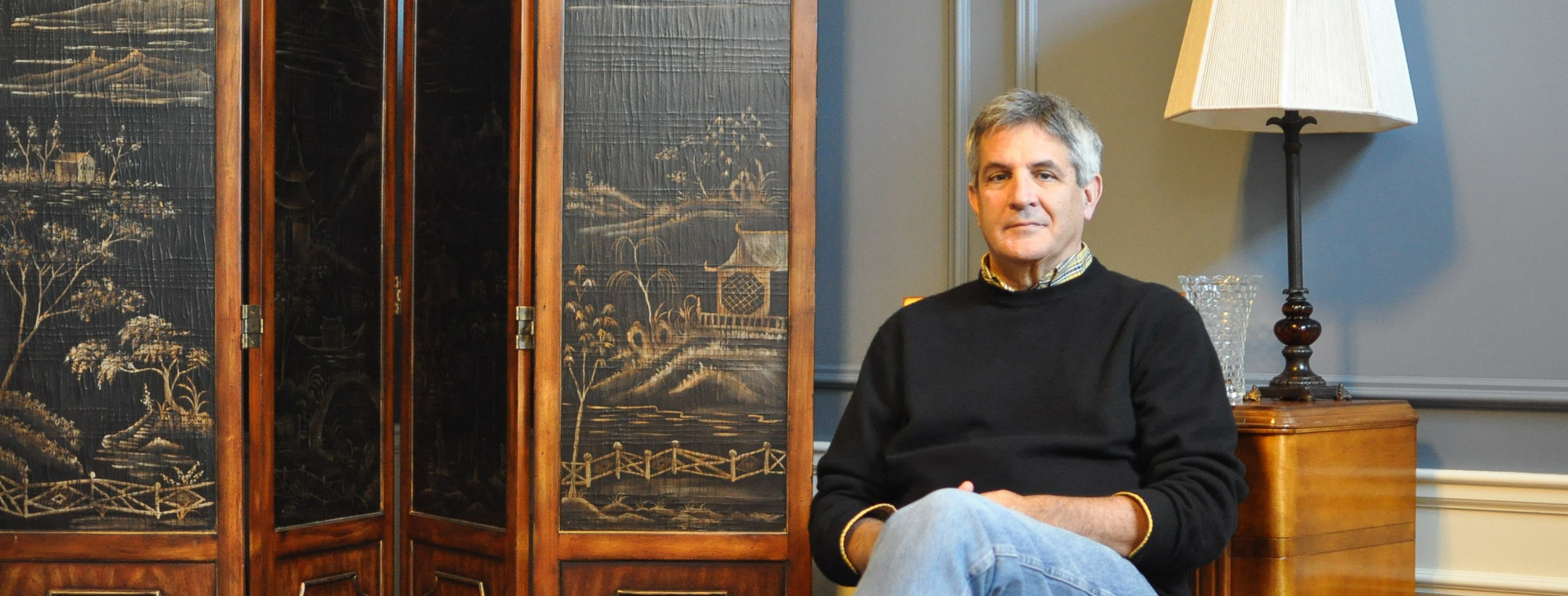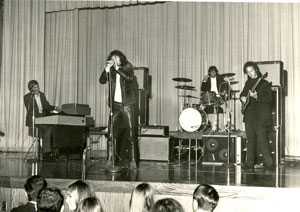Everything has a story, even things so silly that they have “silly” right in their name. Such is the case with Silly Putty. In 1949, a jazz-loving cool cat from New Haven invested $147 he didn’t have to buy the rights to a weird, bouncy substance – and he ended up 25 years later with a fortune of $140 million. That’s just how things bounce sometimes.
In 1949, when he was 18 and a freshman at the Yale School of Music, the future jazz legend Willie Ruff wandered into a house on Temple Street in New Haven, looking for his friend and fellow horn student, Bob Cecil. He later recalled the moment in his autobiography, A Call to Assembly:
There on the first floor, I saw Cecil and a busy group of undergraduates, looking like kids in nursery school. They all seemed to be wrestling large blobs of soft but very stubborn plastic material from 50-gallon drums. What was this all about? I watched, more than bemused. They were flattening the stuff out on a table, forming it into long rolls like cookie dough. Still others were cutting the rolls into little chunks and weighing them on postal scales. The chunks then went to the next man in the crude assembly line, who put them into plastic packages that looked like two halves of an egg.
“What the hell is it?” I asked Bob.
“Silly Putty.”
“Come again?”
Bob Cecil had called Ruff over that day to see if he wanted a job on the assembly line (he didn’t; he was already regularly playing his horn for pay) but also to meet Peter Hodgson, a jazz lover and one of New Haven’s coolest cats. Hodgson was 20 years older than Ruff and Cecil. He one day would be described admiringly by The New York Times as “a tall, robust man with a close-cropped, full, gray explorer’s beard.” But at the time, in 1949, after an up-and-down 15-year career in marketing and advertising, he was $12,000 in debt and badly in need of a new idea. That’s when, by chance, a glob of silicone by-product bounced into his life.
 The puttylike substance was nothing new. It had been around since 1943, when James Wright, laboring in a General Electric laboratory to come up with a cheap synthetic rubber substitute, happened to drop boric acid into silicone oil, and up sprang a substance that bounced higher and stretched even further than rubber – too high and too far, perhaps, for any practical use. Although GE shared the new discovery with scientists around the world, none showed any interest in developing it. The “nutty putty,” as it was called, remained a curiosity.
The puttylike substance was nothing new. It had been around since 1943, when James Wright, laboring in a General Electric laboratory to come up with a cheap synthetic rubber substitute, happened to drop boric acid into silicone oil, and up sprang a substance that bounced higher and stretched even further than rubber – too high and too far, perhaps, for any practical use. Although GE shared the new discovery with scientists around the world, none showed any interest in developing it. The “nutty putty,” as it was called, remained a curiosity.
When it eventually found its way into Hodgson’s hands, by way of New Haven toy-store owner Ruth Fallgatter, whose catalog he produced, he saw its potential right away. He liked the way it could bounce and stretch, ooze and puddle, break into pieces with a hammer blow, and even pick up images from newspapers and magazines. He scraped together $147 to order a batch from GE and secure the production rights. Then he got together with Fallgatter to sell some to the public at $2 a pop. By all accounts, it did well, but not well enough to keep Fallgatter interested. She dropped out of the development scheme and left it all in the hands of Hodgson. And it was here that his innate creativity and marketing chops conjured up the brilliant egg-shaped container, the crude assembly line of Yalies on Temple Street and the product’s immortal name, Silly Putty.
Fueled mostly by desperation, Hodgson had to move very fast, and he did. Less than a year later, in August 1950, a reporter for the “Talk of the Town” section in The New Yorker would write, “We went into the Doubleday bookshop at Fifth Avenue and Fifty-second Street the other day, intending, in our innocence, to buy a book, and found all the clerks busy selling Silly Putty, a gooey, pinkish, repellent-looking commodity that comes in plastic containers the size and shape of eggs.” A Doubleday official noted that the company’s several shops had sold 10,000 eggs in the preceding month at $1 each. And here was Hodgson himself, extolling the virtues of his product, which in the beginning he had aimed at adults.
“It means five minutes of escape from neurosis,” he told The New Yorker. “It means not having to worry about Korea or family difficulties. And it appeals to people of superior intellect; the inherent ridiculousness of the material acts as an emotional release to hard-pressed adults.” To which the huckster in him could not help adding, “We’ll sell a million eggs by Christmas.”
It’s not known whether he reached that lofty goal that year or not, but it’s certain that Silly Putty took off as the years went by. It soon found its rightful niche as a kids’ toy, ran some ads on the “Howdy Doody Show” and became a mid-1950s staple right alongside baseball cards and Davey Crockett coonskin caps.
As for Hodgson, he enjoyed the hell out of his unexpected new fortune. One thing that happened was that when he finally met Willie Ruff, the two became great friends, as Ruff later remembered:
Pete often drove me into New York in his new elegant maroon Hudson convertible to listen to Duke Ellington, Louis Armstrong and other jazz greats. We went to expensive dining spots on the Silly Putty expense account, places I’d never have been able to afford. Although I wasn’t on the Silly Putty payroll, Pete made me the firm’s unofficial music director and put me in charge of purchasing new jazz and classical recordings that I felt he and his kids should be listening to. Silly Putty was a boon to my already hot and broad exposure to good music, and thanks to Pete and that expense account, I learned my way around New York’s music emporiums while at Yale.
As his fortune grew, Hodgson moved his family out to an 80-acre estate in Madison, Connecticut, on Long Island Sound, known simply as “The Hill.” Here, all were welcome, most notably the family of his longtime vice president for production, William Henry Haynes, a young African-American who’d joined Hodgson at the very beginning through a connection with Ruth Fallgatter’s toy store and stayed until his death, at age 49, in 1976. In her blog, Haynes’ daughter, Carol, recalls the days of going out to The Hill:
We spent a great deal of our childhood on The Hill. When Pete and [wife] Margaret were out of the country we would sometimes spend up to a week there. It was an idyllic, peaceful and storybook setting.
Pete and Margaret never locked their doors. They figured that if anyone really wanted anything they owned they would find a way to get in. Even when they left for long trip in Europe they would leave the doors open and the keys in their cars. When we would arrive at the house we would just walk through the poolside doors and settle in.
The property had a tennis court, a pool, a side of the house where you had breakfast and another side where you had lunch and dinner. My favorite room, the living room, was alike a small cathedral. It had French-style glass panes all around and it was two to three stories high. It seemed as big as a basketball court. Pete was a music buff and there were what seemed like a million albums lined all around the perimeter of the room. When we were there we heard mostly classical and jazz. But music was always bouncing off the walls.
Such was the life that Silly Putty afforded and that Pete Hodgson readily shared. When he died in 1976 at the age of 64, he left a fortune of $140 million – not a bad return on his initial $147 investment. By then, Silly Putty had become a hit in the Soviet Union and traveled around the moon with the Apollo 8 astronauts. In 25 years, it would be inducted into the National Toy Hall of Fame. All this from what once was an unwanted lump of goop.

Willie Ruff conducted the music for Hodgson’s memorial service, held at Yale Divinity School. Margaret Hodgson said it had been her husband’s wish that there be no speaking, no preaching, no religious references – only music. Ruff gathered the musicians and selected the music. Let’s just hope that one of the selections was something with a little bounce to it.

